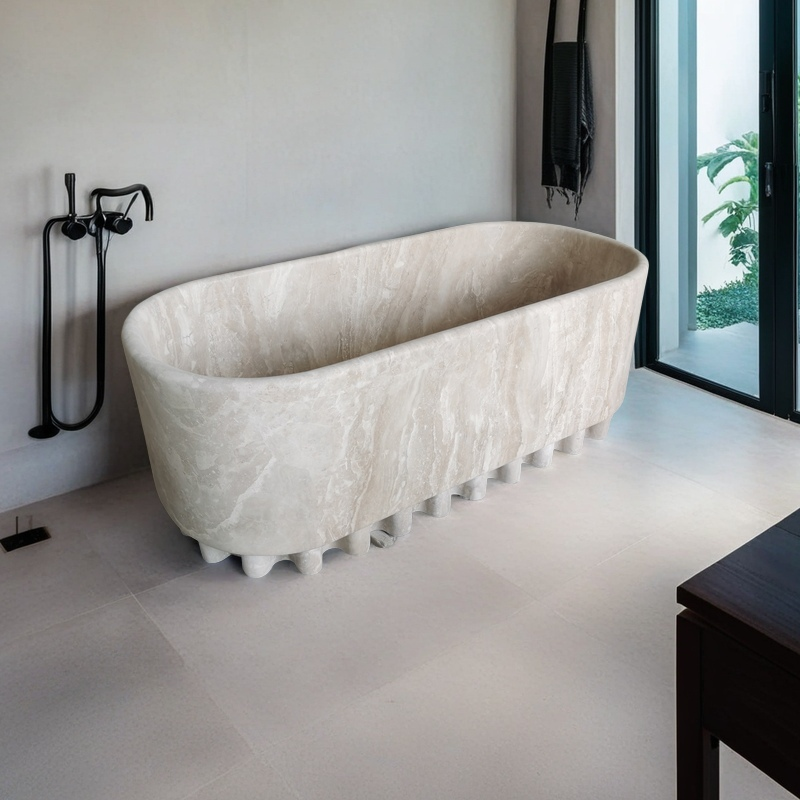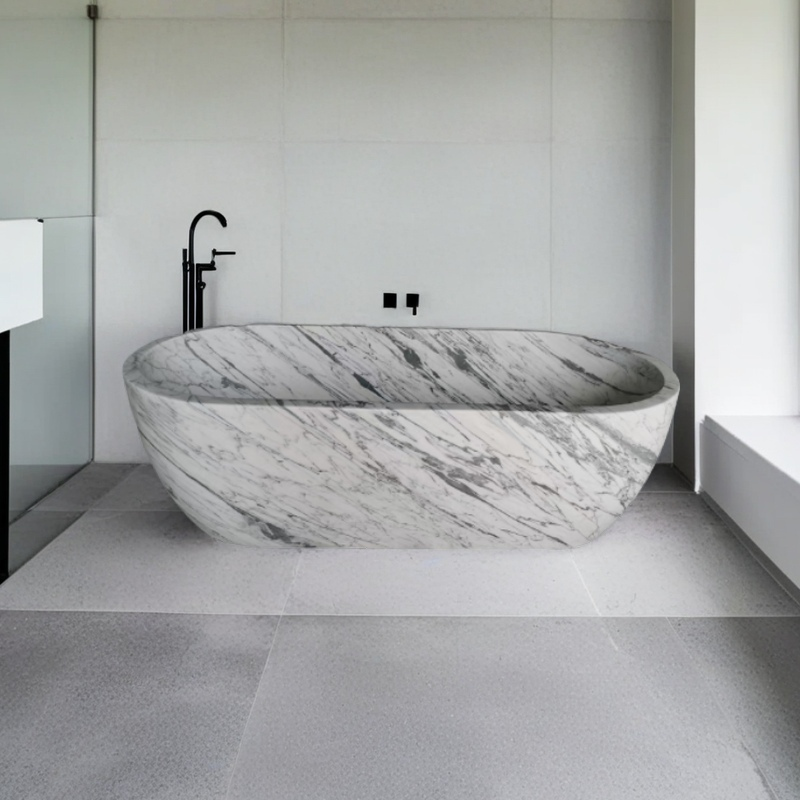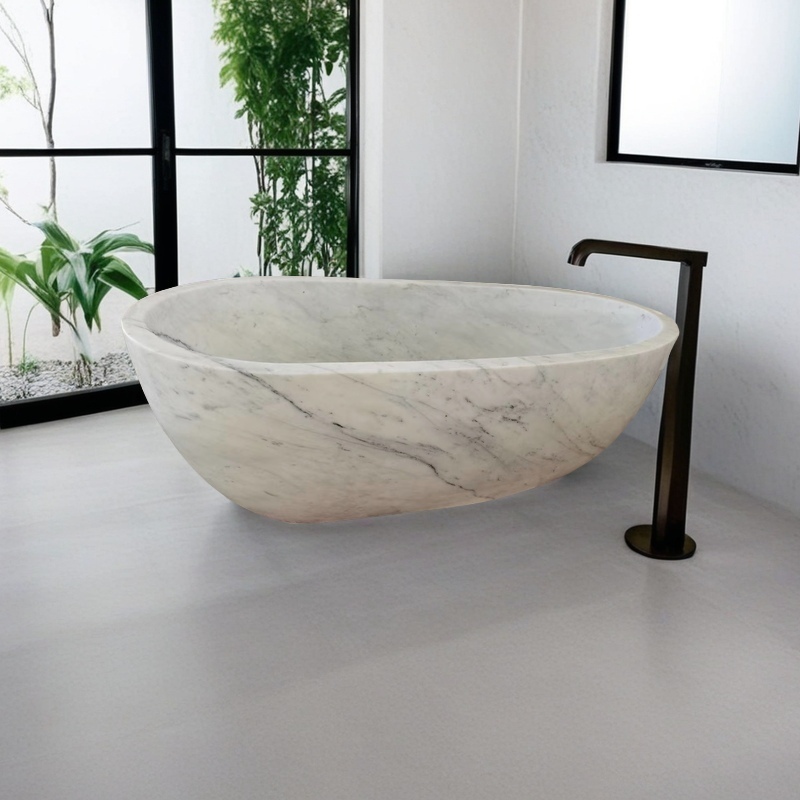Stone Bathtub Installation Standards Guids
Installing stone fixtures in your bathroom elevates its aesthetic, but it demands meticulous attention to engineering details. Improper installation can lead to serious issues like cracking, loosening, or water damage. To ensure your project's success, here’s a breakdown of three crucial acceptance standards covering technical specs, common pitfalls, and essential tools.

1. Technical Details: Load-Bearing & Waterproofing
Load-Bearing Requirements for Natural Stone Vanities (Especially Wall-Hung):
The elegance of a wall-hung stone sink comes with strict structural demands. The supporting wall must be a load-bearing wall or reinforced to handle the significant weight.Key Standard: For a typical wall-hung natural stone basin, the墙体承重必须达到或超过 80kg/㎡ (wall load-bearing capacity should be ≥ 80kg/㎡). Failure to verify this can result in the fixture detaching from the wall, causing damage and safety hazards. Always confirm the wall's capacity with your contractor and engineer before installation.
Waterproofing Process for Stone Bathtubs & Surrounds:
Stone is porous, making proper sealing and joint treatment paramount.Key Standard: All joints and seams (where the tub meets walls or floors) must be sealed with a high-quality, neutral-cure silicone sealant. Avoid acidic or alkaline sealants, as they can腐蚀石材 (corrode the stone), leading to discoloration and surface etching. This creates a durable, flexible, and waterproof barrier without damaging the stone.
2. Pitfall Avoidance Guide: 3 Common Contractor Mistakes
Ignoring Stone Absorbivity Leading to Frost Damage:
The Mistake: Using stone with high water absorption率 (absorbivity) in cold climates (e.g., Northern regions) without proper sealing. Water seeps in, freezes, expands, and causes the stone to冻裂 (frost crack).
Solution: Select stones with low absorbivity for wet areas. Ensure a penetrating sealer is applied correctly and reapplied as per manufacturer recommendations, especially before winter.
Inadequate Structural Support for Countertops:
The Mistake: Installing heavy stone countertops or vanities on weak cabinetry or frames not designed for the load, causing sagging or cracks over time.
Solution: Verify that the underlying support structure (cabinets, braces) is engineered to support the full weight of the stone, including the sink and potential live loads.
Using Improper Cleaning or Sealing Chemicals:
The Mistake: Using harsh, acidic cleaners (like those for ceramic tiles) or the wrong type of sealant on natural stone. This can strip the sealant, etch the surface, and cause permanent stains.
Solution: Insist on pH-neutral cleaners specifically formulated for natural stone. Confirm the contractor uses the correct, recommended sealant for the type of stone being installed.

3. Essential Tool Recommendation Checklist
Using the right tools is non-negotiable for a precise and safe installation. Here's a quick list:
Reinforced Diamond Blade /专用切割片 (Specialty Cutting Disc): For clean, chip-free cuts on hard stone tiles and slabs.
High-Quality Level (e.g., Stabila Type 196 or similar): A precise, long spirit level or digital level is crucial for ensuring all installations are perfectly horizontal and vertical, preventing water pooling.
Variable Speed Grinder/Polisher: For cutting, shaping, and polishing edges.
Caulking Gun & Sealant Smoother: For the professional application of neutral silicone sealant.
Stone Nibs/Spacers: To ensure consistent grout joints.
Rubber Mallet: For adjusting stone pieces without causing surface damage.
Heavy-Duty Core Drill Bit: For drilling precise holes for faucets and drains in stone.

By focusing on these critical standards—石材浴缸安装标准 (Stone Bathtub Installation Standards) and overall structural integrity—you can hold your team accountable. This guide serves as a vital 卫浴承包商石材施工指南 (Bathroom Contractor Stone Work Guide) to ensure a beautiful, functional, and long-lasting stone bathroom. Always conduct a final inspection against these points before signing off on the project!
